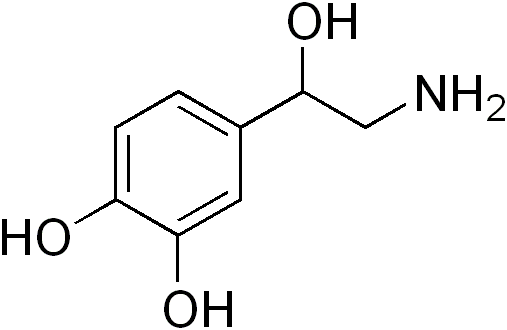Sympathomimetic drug
Editor-In-Chief: C. Michael Gibson, M.S., M.D. [1]


Sympathomimetic drugs are substances that mimic the effects of the hormone epinephrine (adrenaline) and the hormone/neurotransmitter norepinephrine (noradrenaline). They all raise blood pressure and are all weak bases.
Mechanisms of action
The mechanisms of sympathomimetic drugs are to act as catecholamine synthesis precursors, norepinephrine transporter blockade, adrenergic receptor agonism, inhibition of epinephrine and norepinephrine metabolism and/or cholinergic inhibition.
Synthesis precursor
Synthesis precursors of catecholamines stimulate the catecholamine synthesis. One example is levodopa.
Norepinephrine transporter blockade
Classical sympathomimetic drugs are amphetamines (including MDMA), ephedrine and cocaine, which act by blocking and reversing norepinephrine transporter (NET) activity. NET is a transport protein expressed on the surface of some cells that clears noradrenaline and adrenaline from the extracellular space and into cells, terminating the signaling effects.
Adrenergic receptor agonism
Direct stimulation of the α- and β-adrenergic receptors can produce sympathomimetic effects. Albuterol is a very commonly used direct-acting β2-agonist.
Inhibition of epinephrine and norepinephrine metabolism
Inhibition of norepinephrine metabolism can produce sympathomimetic effects. Norepinephrine is mainly metabolized by the enzyme monoamine oxidase, the monoamine oxidase inhibitor (MAOI) drugs can induce such effects.
Cholinergic inhibition
Sympathomimetic drugs may also work by inhibiting the opposite system, i.e. the parasympathetic system. It does so by inhibiting the effects of acetylcholine, e.g. by inhibiting synaptic vesicle release, antagonize acetylcholine receptors,
- synaptic vesicle release inhibitors:
- ACh receptor inhibitors
Cross-reactivity
Substances like cocaine also affect dopamine, and some substances like MDMA affect serotonin.
Norepinephrine is synthesized by the body into epinephrine, causing central nervous system stimulation. Thus, all sympathomimetic amines fall into the larger group of stimulants (see psychoactive drug chart). Many of these stimulants have therepeutic use and abuse potential, can induce tolerance, and possibly physical dependence.
See also
External links
- Amines,+Sympathomimetic at the US National Library of Medicine Medical Subject Headings (MeSH)
- Template:EMedicineDictionary
- Template:EMedicineDictionary
Template:Sympathomimetic amines Template:Psychostimulants, agents used for ADHD and nootropics
Template:Antiglaucoma preparations and miotics
Template:Mydriatics and cycloplegics
de:Sympathomimetikum
no:Sympatomimetisk amin
fi:Sympatomimeetti